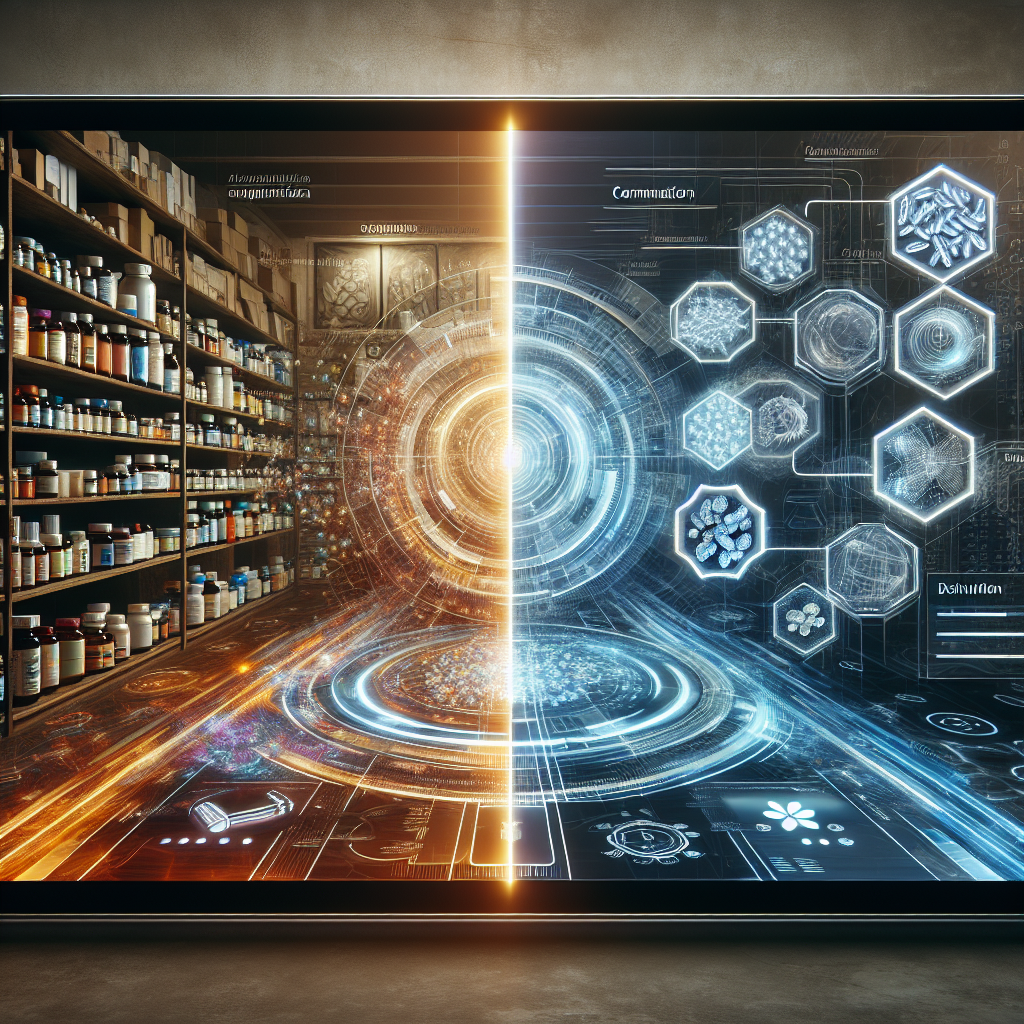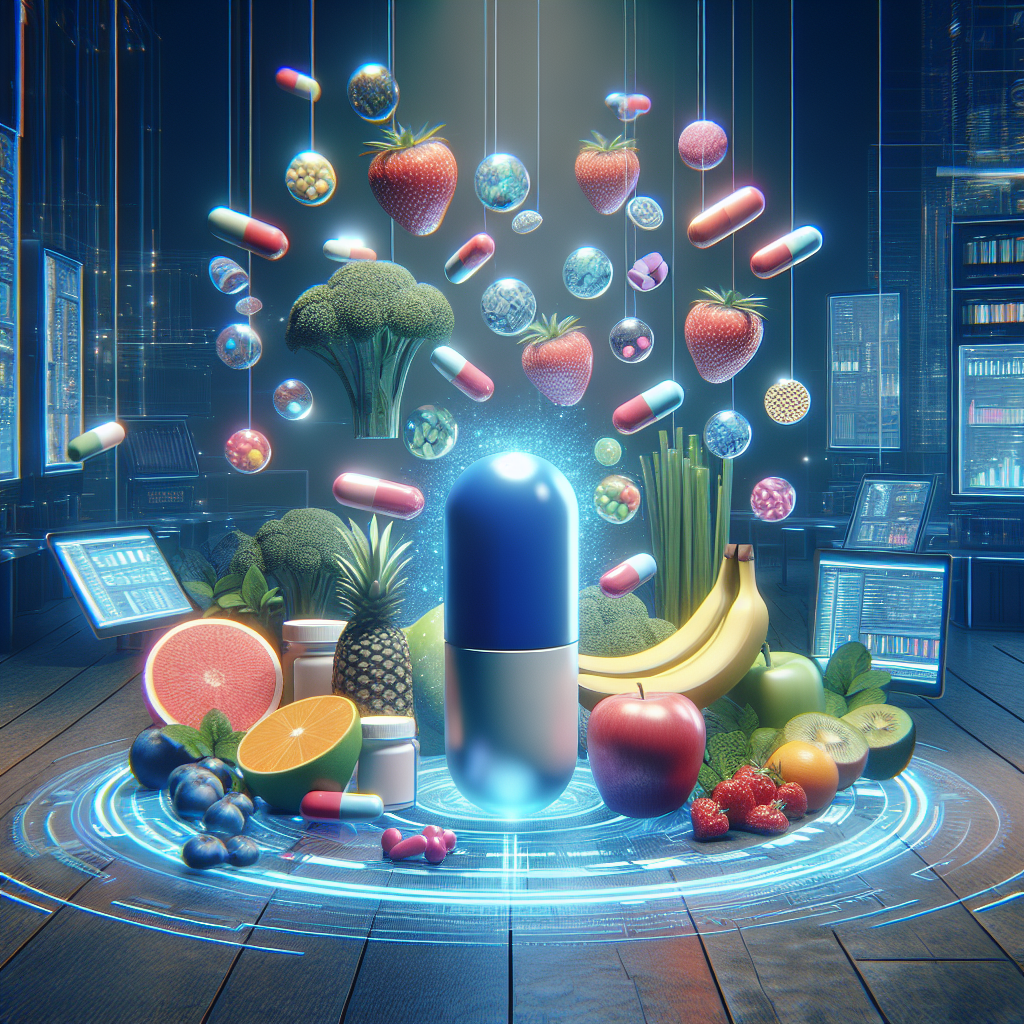The Intersection of Technology and Wellness: Vitamins

Discover the intersection of technology and wellness with our range of vitamins. Improve your health and wellbeing with our scientifically-formulated supplements. Visit My Vibrant Vitality today to start your journey towards a healthier you.
Exploring the Role of Technology in Enhancing Vitamin Intake
The intersection of technology and wellness is a fascinating and rapidly evolving field, with advancements in technology playing a pivotal role in enhancing our health and wellbeing. One area where this intersection is particularly evident is in the realm of vitamins. Vitamins are essential nutrients that our bodies need in small amounts to function properly. They play a crucial role in maintaining our health, supporting our immune system, and promoting growth and development. However, despite their importance, many people struggle to get the recommended daily intake of vitamins from their diet alone. This is where technology steps in, offering innovative solutions to help us meet our vitamin needs.
The advent of technology has revolutionized the way we approach our health and wellness. It has given rise to a plethora of digital tools and platforms that make it easier for us to monitor and manage our vitamin intake. For instance, there are now mobile apps that can track our food consumption and provide detailed nutritional analysis, including the amount of vitamins we are getting from our meals. These apps can also offer personalized dietary recommendations based on our individual needs and goals, helping us to make more informed decisions about our diet and nutrition.
In addition to mobile apps, technology has also paved the way for the development of smart devices that can monitor our vitamin levels in real-time. These devices use advanced sensors and algorithms to analyze our biometric data and provide insights into our vitamin status. For example, there are wearable devices that can measure the levels of certain vitamins in our sweat, giving us a non-invasive way to monitor our vitamin levels throughout the day. This real-time monitoring can help us to identify any vitamin deficiencies early on and take corrective action before they lead to health problems.
Moreover, technology has transformed the way we obtain our vitamins. Online platforms have made it easier than ever to access a wide range of vitamin supplements, with the convenience of home delivery. These platforms often provide detailed product information and customer reviews, helping us to choose the right supplements for our needs. Some even offer personalized vitamin subscriptions, where we can receive a customized selection of vitamins based on our individual health profile and lifestyle.
Furthermore, advancements in biotechnology have led to the creation of genetically modified foods that are fortified with vitamins. These foods offer a practical solution for people who struggle to get enough vitamins from their diet. For example, there are now genetically modified rice varieties that are rich in vitamin A, helping to combat vitamin A deficiency in regions where rice is a staple food.
In conclusion, technology is playing a crucial role in enhancing our vitamin intake. It is providing us with innovative tools and solutions that make it easier for us to monitor and manage our vitamin levels, access high-quality vitamin supplements, and even consume foods that are fortified with vitamins. As technology continues to evolve, we can expect to see even more exciting developments in this field, further enhancing our ability to meet our vitamin needs and maintain our health and wellbeing. The intersection of technology and wellness is indeed a promising frontier, offering new possibilities for improving our health through better vitamin intake.
The Impact of Digital Advancements on Vitamin and Nutrient Tracking

The intersection of technology and wellness is a rapidly evolving landscape, with digital advancements playing a pivotal role in the way we understand and manage our health. One area where this intersection is particularly evident is in the realm of vitamins and nutrient tracking. The advent of digital tools and platforms has revolutionized our ability to monitor our vitamin intake, offering a more personalized and efficient approach to maintaining optimal health.
Traditionally, managing vitamin intake has been a complex task, often requiring individuals to maintain a balanced diet, take supplements, and regularly consult with healthcare professionals. However, the rise of digital technology has simplified this process, enabling individuals to track their vitamin intake with unprecedented ease and accuracy.
One of the most significant digital advancements in this area is the development of mobile applications designed to monitor vitamin and nutrient intake. These apps allow users to log their daily food consumption, providing detailed breakdowns of the vitamins and nutrients contained in each meal. This information can be used to identify any deficiencies or excesses, enabling individuals to adjust their diet accordingly.
Moreover, these apps often come equipped with features that offer personalized recommendations based on the user’s unique dietary needs. For instance, if a user is found to be deficient in Vitamin D, the app may suggest foods rich in this vitamin or recommend a suitable supplement. This level of personalization is a game-changer, allowing individuals to take a proactive approach to their health and wellness.
In addition to mobile applications, wearable technology has also made significant strides in vitamin and nutrient tracking. Devices such as fitness trackers and smartwatches are now capable of monitoring a range of health metrics, including heart rate, sleep patterns, and even blood glucose levels. This data can provide valuable insights into an individual’s overall health, potentially highlighting any vitamin deficiencies that may be impacting their wellbeing.
For example, a consistently high heart rate could indicate a deficiency in magnesium, a mineral that plays a crucial role in heart health. Similarly, poor sleep patterns could be a sign of low levels of vitamins B6 and B12, both of which are essential for maintaining healthy sleep cycles. By identifying these correlations, wearable technology can help individuals address any underlying vitamin deficiencies, thereby improving their overall health and wellness.
Furthermore, the integration of artificial intelligence (AI) into these digital tools is set to take vitamin and nutrient tracking to new heights. AI algorithms can analyze a user’s dietary data, identifying patterns and trends that may not be immediately apparent. This can provide a more comprehensive understanding of an individual’s vitamin intake, enabling them to make more informed dietary decisions.
In conclusion, the intersection of technology and wellness has had a profound impact on the way we manage our vitamin intake. Digital advancements such as mobile applications, wearable technology, and AI have revolutionized vitamin and nutrient tracking, offering a more personalized and efficient approach to maintaining optimal health. As technology continues to evolve, we can expect to see even more innovative solutions designed to help us manage our health and wellness.
How Technology is Revolutionizing the Vitamin and Wellness Industry
The intersection of technology and wellness is a fascinating and rapidly evolving space, particularly in the realm of vitamins and dietary supplements. The vitamin and wellness industry, once dominated by traditional brick-and-mortar stores and conventional manufacturing processes, is now being revolutionized by technology. This transformation is not only changing the way vitamins are produced and distributed, but also how they are personalized and consumed, leading to a more efficient, effective, and tailored approach to wellness.
The advent of technology has brought about significant advancements in the production of vitamins. Traditional methods of vitamin production often involved lengthy processes and the use of synthetic materials. However, with the introduction of technology, the production process has become more streamlined and eco-friendly. For instance, biotechnology has enabled the extraction of vitamins from natural sources, reducing the reliance on synthetic materials. This not only ensures the purity of the vitamins but also aligns with the growing consumer demand for natural and organic products.
Moreover, technology has also revolutionized the distribution of vitamins. E-commerce platforms have made it possible for consumers to purchase vitamins and supplements from the comfort of their homes. This has not only expanded the reach of vitamin manufacturers but also provided consumers with a convenient and time-saving shopping experience. Additionally, the use of data analytics has allowed companies to gain insights into consumer behavior, enabling them to tailor their marketing strategies and product offerings to meet the specific needs and preferences of their customers.
Perhaps one of the most significant impacts of technology on the vitamin and wellness industry is the advent of personalized nutrition. With the help of genetic testing and artificial intelligence, it is now possible to create personalized vitamin regimens based on an individual’s unique genetic makeup and lifestyle factors. This approach to wellness ensures that individuals receive the exact nutrients they need, in the right amounts, to optimize their health. This level of personalization was unimaginable a few years ago but is now becoming increasingly mainstream, thanks to technology.
Furthermore, technology has also enhanced the way vitamins are consumed. Innovative delivery systems such as microencapsulation and nanotechnology have improved the bioavailability of vitamins, ensuring that they are absorbed more efficiently by the body. This not only maximizes the benefits of the vitamins but also reduces waste, making the consumption of vitamins more cost-effective.
In conclusion, technology is playing a pivotal role in revolutionizing the vitamin and wellness industry. From production and distribution to personalization and consumption, technology is making vitamins more accessible, effective, and personalized than ever before. As technology continues to evolve, it is expected to bring about even more exciting changes in the industry, paving the way for a future where wellness is not just a goal, but a way of life. The intersection of technology and wellness, particularly in the realm of vitamins, is indeed a testament to the incredible potential of technology to transform industries and improve lives.